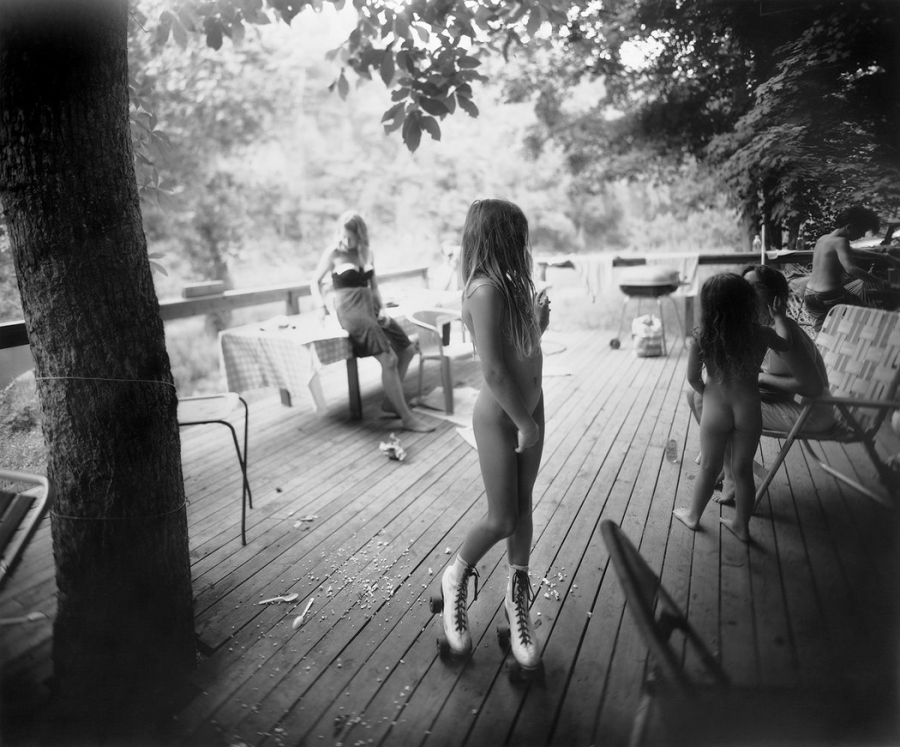A black-and-white photograph titled “White Skates” perfectly captures the provocative, sensual and enigmatic style of Sally Mann’s stunning photography. Mann’s older daughter, Virginia, stands naked and poised in some white roller skates on a wood deck with her siblings. Her pale body is luminous; it appears sun-kissed and at the center of the intense summer light behind her.
If you know Mann’s photography, it’s most likely because of “White Skates,” and the rest of her controversial pictures she took of her family for her series turned book, “Immediate Family.” The photographs show Mann and her family about their lives, sometimes without clothing, on their farm tucked into the Virginia hills. Isolated, primitive and in the thick of summertime, Mann worked with conviction to keep her lens open to the full scope of their childhood, and with the willing, creative participation of her entire family, photographed their triumphs, confusion, harmony and isolation, as well as the hardships that tend to befall children — bruises, vomit, bloody noses, wet beds — all of it.
Even those who find her “Immediate Family” series discomforting, most still must concede to the otherworldliness of her black-and-white images and that she has a distinctive and unsettling vision throughout each photographic project she embarks on. She uses the viewers’ own squeamishness as her motive and material. She’s a daredevil, shaming her audience by confronting what they’ve shunned – nudity, life, and death.
What makes her style and composition so dreamlike – besides the often desolate and dilapidated scenery of her Southern home front – is the cumbersome process she goes through with each photograph, that dates back to the 1850s. She coats a glass plate with silver nitrate and inserts it in an 8-by-10 view camera. She has five minutes to take the picture before the coating dries.
Many accidents can happen, but Mann welcomes them. She relishes the accidental flare over a subject or scattered white spots that appear in the final shot. The wet plate, creates a large format negative image on glass, not film. She shoots with antique view cameras from the early 1900s, the kind where you duck under a cloth to take the picture. Her process sidles between the dramatic and the manipulative, and these surprise flaws create an authoritative composition with a self-defining wholeness in her pictures that have made her one of the most important photographers of our time.


